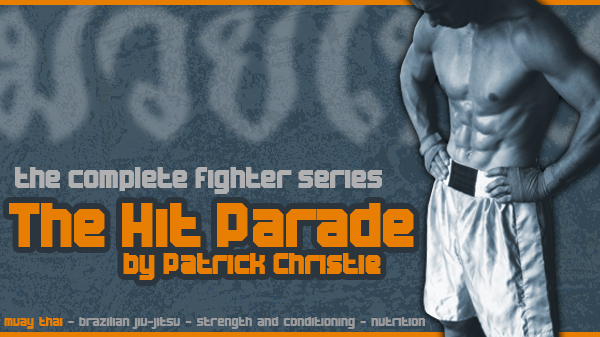Why do some gyms teach MMA as a single style with a one-coach-fits-all model?
Others, like St. Charles MMA and Vaghi Martial Arts, two premier training grounds in St. Louis, have a curriculum that trains striking and grappling separately with coaches who are experts in their chosen area. For some, it's a shortage of skilled resources or a limited payroll. For others, it's simply not knowing any better. But the gyms that are able to combine instruction in separate disciplines and provide high-level coaches with experience and knowledge in one area typically put out better fighters.
St. Louis recently saw two seminars given by important figures of Muay Thai past, each with a very different style and history in the sport. Ramon Dekkers, an 8x world champion and a Dutch legend, led an outstanding event in mid-June. Later in July St. Louis hosted Ajarn Surachai Sirasute, a Bangkok native, veteran of more than 70 Muay Thai fights in Thailand, and the founder of the Thai Boxing Association of the USA. "Chai", as he's affectionately referred to, is widely credited with bringing Muay Thai to the US. Both seminars were well attended and covered very different techniques but the one common element of both seminars: MMA athletes were in attendance.
Fact: more and more MMA athletes are infusing striking coaches into their training in response to the elevation of talent in the current MMA ranks. Mark Beecher, the current head Muay Thai coach at Drysdale Jiu Jistu in Las Vegas and an accomplished Thai fighter in his own right, provides striking know-how to UFC veterans Vinny Magalhaes and Amir Saddolah; Saddolah frequently travels to Holland to train with Dutch coach Marco van den Broek at Calmaro Gym as well. Other top Muay Thai legends like Greg Nelson and Mark DellaGrotte provide striking instruction to guys like Kenny Florian, Marcus Davis, Stephan Bonner, and Sean Sherk – MMA fighters all with a reputation for strong striking.
So why are MMA athletes training their striking separate from MMA and choosing Muay Thai as their preferred style? Maybe its how well the Muay Thai clinch compliments the grappling of MMA? Maybe it's because Muay Thai strikes are incredibly effective in the close quarter's combat that often marks an MMA fight, being effective both on the feet and on the ground. Or maybe it's because of the absolute ferocity and violence of Muay Thai?
For Josh Sampo, a top flyweight (125-pounds) prospect out of St. Charles MMA, the choice is simple.
"Muay Thai uses all the elements of my body to inflict pain and cause damage to my opponents," Sampo said. "True, Muay Thai is a stand-up sport but the proper way to throw knees and elbows on my feet carries over to my ground attack."
Sampo holds an impressive 7-2 professional MMA record, and is 2-1 in his professional Muay Thai career to boot.
The bottom line is if you're an MMA athlete and you want to develop your striking into an unrelenting, unabashed method of destruction, go find a competent Muay Thai instructor. Find someone who's been around the sport long enough to have chosen a preferred style (Thai or Dutch) and can demonstrate the full-range of strikes and who has enough successful fighters in the stable to validate the ability to develop athletes to successful outcomes. Knowing that not all fights go to the ground, or stay there when they do, adding the use of two shins, two knees, two fists, and two elbows in to your arsenal of attack can be extremely beneficial to an MMA athlete.
Become a student of The Art of Eight Limbs – it won't let you down!!
Patrick is the Muay Thai trainer for The Art of Eight Muay Thai, the Muay Thai program of Vaghi Martial Arts and St. Charles Mixed Martial Arts. You can contact Patrick at patrick@knucklejunkies.com. Please visit teamvaghi.com and stcharlesmma.com

Chris Oth | Knuckle Junkies graphic
Making the Connection
By Patrick Christie | Columnist for Knuckle Junkies



Follow Knuckle Junkies